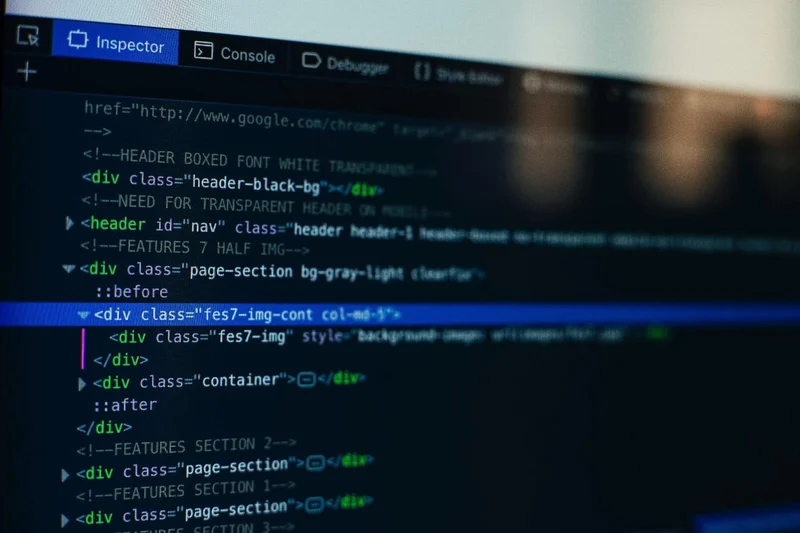Python & Django - A Match Made in Heaven?
Web development takes many shapes and sizes, but the key to any approach is the ease with which websites can be created, and the end result. Python has long been touted as an excellent option for web development but can be technologically taxing. Therefore, Django is an add-on of sorts that can help to make the web development process a breeze.

Here, we will discuss some of the major advantages and disadvantages of using Python and Django, as well as reference a popular PDF that goes into depth (450 pages of it, to be precise!) on how to use Django to your advantage when working with Python.
Let’s start with our basics, shall we?
Python
Python is an incredibly popular programming language. Created by Guido van Rossum, it was named after his favorite comedy, Monty Python’s Flying Circus, according to this article on Forbes. Created in the 1980s, it was designed as an open-source offering. This has likely been a contributing factor in its widespread adoption - being available at no cost at all, and able to be adapted, upgraded, and maintained in a continuous, collaborative manner as per the open source ethos.
It competes with other web development languages such as Java but is less nuanced with fewer design decisions to be made along the way. In a sense, it is not design-agnostic but rather follows specific edicts for coding which means that the coding decisions can either go one way or another.
Speaking of one way or another - and hopefully, by now you have a delightful song riff wafting through your mental rafters - there are more ways to program in Python than to use the programming language directly. Let’s take a look at how Django comes into the picture.
Django
Django is referred to by its website as “the web framework for perfectionists with deadlines”. It goes on to say the following about the web development framework:
“Django is a high-level Python web framework that encourages rapid development and clean, pragmatic design. Built by experienced developers, it takes care of much of the hassle of web development, so you can focus on writing your app without needing to reinvent the wheel. It’s free and open source.”
Similarly to Python, it is open source. Unlike Python, it has its own ‘con’ - the DjangoCon - which is on 16th October 2022. People are partial to this pairing. Python and Django may be a match made in heaven - let’s look at some industry resources addressing this wholesome two-some.
Python & Django - Resources
When IBM offers resources for a given application, you know it is legitimate. IBM has “a step-by-step tutorial for using IBM Cloud services to track activity and monitor the health of a Python-based Kubernetes application written using the Django web framework and running on the IBM Cloud.”
A very popular PDF document entitled ‘Python Web Development with Django’ has been making the rounds also - freely accessible here, it can be downloaded and accessed at will. This allows for tidbits such as ‘Django for the Impatient: Building a Blog’, ‘Content Management System’, and ‘Tools for Practical Django Development. Get your hands on it, now.
The website Django - Full Stack Python, offers several tutorial links and resources, to help you on your way. It describes Django as a ‘batteries-included’ approach - as no further installs are required to get the functionality you are seeking. It throws some shade Flask’s way, in the following statement:
“For example, authentication, URL routing, a template engine, an object-relational mapper (ORM), and database schema migrations are all included with the Django framework. Compare that included functionality to the Flask framework which requires a separate library such as Flask-Login to perform user authentication.”
The Popular PDF - What Does It Say?
If you decide to draw on the expertise offered in the PDF document freely accessible online, you will encounter real-life tips and tutorials to follow along with.
For instance, forget Build-A-Bear. Instead, why not try to build a blog?
It even offers to address your ‘perfectionist side’ in the chapter entitled ‘Django for the Impatient: Building a Blog’. An excerpt from the pdf:
“We recommend you to try to follow along and actually build the blog as you go. If that’s not practical - if you aren’t near a computer, or you’re just impatient - simply reading it is illuminating too. That’s especially true if you have experience with one or more other modern Web frameworks since many of the basic concepts are similar.”
The sub-headings are as follows: “Creating the Project”, “Running the Development Server”, “Creating the Blog Application”, “Designing Your Model”, “Setting up the Database” - the list goes on. It’s a veritable paint-by-numbers approach to building a blog, using Python and Django in concert.

Expert Testimony
In a Forbes article, Matt Ratliff, Senior Data Science Mentor at NextUp Solutions, has the following to say:
“Analytics libraries such as NumPy, Pandas, SciPy, and several others have created an efficient way to build and test data models for use in analytics. In previous years, data scientists were confined to using proprietary platforms and C, and custom-building machine learning algorithms. But with Python libraries, data solutions can be built much faster and with more reliability. SciKit-Learn, for example, has built-in algorithms for classification, regression, clustering, and support for dimensionality reduction. Using Jupyter Notebooks, data scientists can add snippets of Python code to display calculations and visualizations, which can then be shared among colleagues and industry professionals.”
A chink in Python’s armor is its lack of suitability for mobile and desktop applications. But generally, it is considered a great starter-for-ten programming language. In the aforementioned Forbes article, Tom Hatch, CTO of SaltStack, has the following to say about Python:
“Python is an excellent choice for most people to learn the basics of code, in the same way that everyone learns how to read and write. But the real beauty of Python is that it is also a language that can scale to large and complex software projects.”
Recommendations
If you can, check out the PDF document mentioned above. It offers a slew of advice, tips, and tricks for tackling the Python-Django match.
Have a look at another Pangea article on web development languages and frameworks associated with them here, if you’d like to compare and contrast your options.
For Pangea vendors that offer web development, feel free to use the Pangea vendor search tool here. Some of the vetted vendors that we work with in the area of web development are BildStudio, APP IT, and CyberLab Solutions.
FAQs:
Q1. Are Python and Django enough for web development?
It would be sufficient to use these two in concert for web development. Considered one of the most popular languages, Python is easy to learn and can also be scaled. The drawback to this option is that it is not suitable for mobile or desktop applications.
Q2. Is Django a good option for web development?
In short, yes. It offers a well-developed framework that increases the ease of use of Python. As such, it reduces nuance in the interest of less time and effort wasted on design decisions.
Q3. How do I use Django web development?
Django web development can be used by downloading open-source software – that is, for free – from the Django website itself. You can opt to use the pdf referenced in this article to start learning the basics of working with Django. Alternatively, have a look at other resources mentioned above. If established corporate IT firms such as IBM mention Python and Django together, then perhaps it is a testament to their romance being real.
